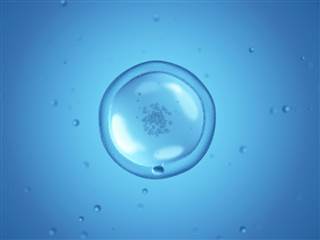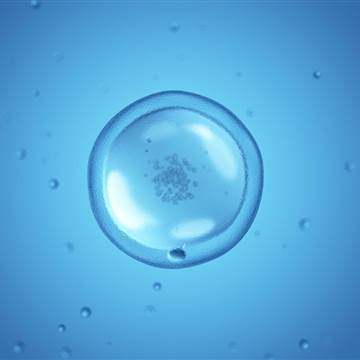A healthy baby boy has been born after he was conceived using a “three-parent” technique to manipulate his DNA, doctors said Tuesday.
Fertility specialists from New York, Cincinnati and Britain did the experimental treatment in Mexico. It has not been approved in the U.S. It has been approved in Britain.


It’s not the first so-called three-parent baby, but it’s the first time modern techniques have resulted in a healthy birth, the doctors said.
The mother carries genetic defects known to cause Leigh syndrome, an incurable, progressive disorder in which brain cells gradually die off, causing a range of symptoms. The treatment, in which a second woman’s DNA is used to replace the faulty genetic material, is aimed at producing a child free of the disease.
“She had four pregnancy losses and two deceased children at age 8 months and 6 years from Leigh syndrome,” Dr. John Zhang of New Hope Fertility Center in New York and Guadalajara and colleagues at Cincinnati Children’s Hospital and Reprogenetics in Britain and in Livingston, New Jersey wrote.
“She had four pregnancy losses and two deceased children at age 8 months and 6 years from Leigh syndrome.”
The doctors have given a bare-bones rundown of the experiment in a brief written summary submitted to a meeting of the American Society of Reproductive Medicine scheduled for mid-October.
One ethics group questioned the decision to do the experiment in Mexico.
“This fertility doctor openly acknowledged that he went to Mexico where `there are no rules’ in order to evade ongoing review processes and existing regulations in the United States,” said Marcy Darnovsky, executive director of the Center for Genetics and Society.
“No researcher or doctor has the right to flout agreed-upon rules and make up their own. This is an irresponsible and unethical act, and sets a dangerous precedent.”
Related: Three-Parent Babies Are an Ethical Choice
The clinic declined any further comment and declined to identify the mother.
Leigh syndrome or Leigh’s disease is a disorder caused by defects in structures inside a cell called mitochondria. Zhang’s team used a technique called spindle nuclear transfer to take the patient’s DNA out of an egg cell and put it into a healthy egg donated by another woman, whose own DNA had been scraped out.
Sperm was used to fertilize the egg using intracytoplasmic sperm injection (ICSI), a standard in vitro fertilization (IVF) technique.
This method uses some cloning technology, and if everything goes as planned, the resulting embryo has DNA from three parents – the mother, the sperm donor and a bit from the egg donor. That’s because not all your DNA is in the nucleus of the cell. Some is in the mitochondria.
This mitochondrial DNA is passed down virtually unchanged from mother to child.
The research team got four very early embryos growing using this technique and one was healthy and normal. It was implanted into the 36-year-old mother and developed normally. The baby boy was born at 37 weeks gestation, which is slightly premature, the team said.
“The baby is currently 3 months old and doing well,” they wrote.
The team said they have found small amounts of the donor woman’s mitochondrial DNA throughout the baby’s body.
“The baby is currently 3 months old and doing well.”
Mitochondria help provide energy inside a cell. Mitochondrial DNA accounts for less than 1 percent of a person’s genetic traits, but these functions are important to health.
Damaged mitochondria are responsible for more than 200 different diseases. They include Alper’s disease, which causes seizures, dementia and blindness, and Leigh syndrome.
There’s no known cure for any of these conditions.
“This work represents an important advancement in reproductive medicine,” said Dr. Owen Davis, president of the American Society for Reproductive Medicine.
“Mitochondrial disease has been an important, and challenging problem. If subsequent research determines the safety and efficacy of spindle nuclear transfer, we look forward to it being an option for patients who risk transmitting mitochondrial diseases to their children,” Davis added in a statement.
Related: Three-Parent Babies Are OK, Experts Say
Earlier this year, an expert panel said experimenting with three-parent babies is OK if it is carefully monitored and regulated.
The National Academy of Medicine panel said these “three-parent” babies could be a way for people with a high risk of rare, devastating genetic diseases to have healthy children that are genetically their own, but said the Food and Drug Administration should carefully regulate such experiments.
And at first, the panel advised, only male embryos should be made this way until it’s clear that dangerous mutations would not be passed down to future generations.
Babies conceived using these fertility techniques could have what are known as germline changes, which can be passed down from generation to generation and open the door to a lab mistake potentially causing problems in a person born decades later.
Fertility specialist Dr. Jamie Grifo of New York University was one of the first to try mitochondrial IVF techniques in the 1990s to help older women conceive healthy children using healthy eggs donated by younger women, but…

![[The Era of Healthy Aging ①] Measuring and Managing](https://loginby.com/itnews/wp-content/uploads/2025/10/1760709632_The-Era-of-Healthy-Aging-①-Measuring-and-Managing-238x178.jpg)





